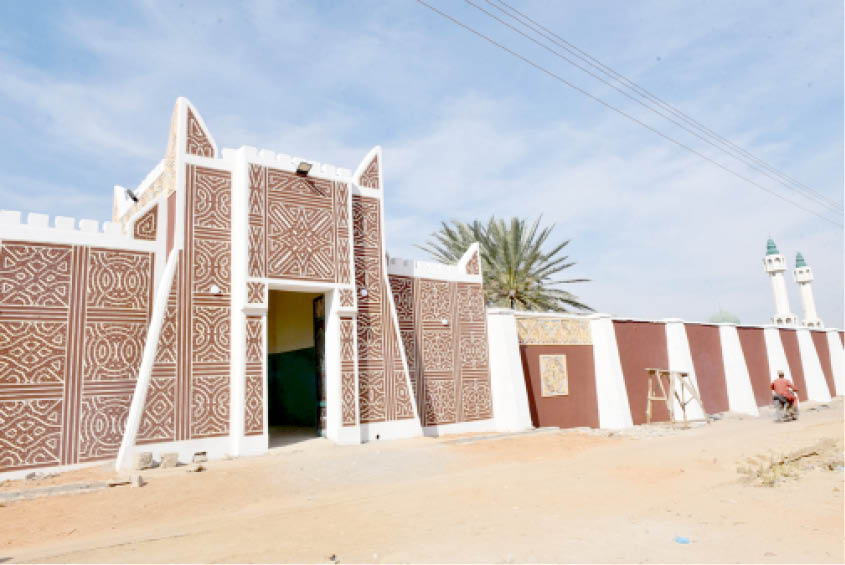Rano Emirate, according to historians, is a settlement as old as the Kano Emirate, but with lesser attention to its historical monuments, which are either forgotten or not preserved.
According to oral literature, Rano came into existence as an independent entity about 300 years ago and it is regarded as one of the oldest settlements in what is known today as Northern Nigeria.
- ACF to Southwest governors: Apprehend attackers of Fulani now
- Stop instigating Yorubas against Fulani herders, Tella warns Akeredolu, Igboho
Some works of literature reveal that the kingdom was fully established in the year 523AD by Kwararrafa warriors. It was also revealed that the kingdom had witnessed three ruling dynasties which are the Kwararrafawa dynasty from 523 AD to 1001 AD, while the Habe dynasty ruled from 1001AD to 1819 AD, then the Fulani dynasty have been ruling from 1819 to date.
This narrative in the literature was confirmed by the Wakilin Tarihi of Rano, Alhaji Basiru Muhammed Rano.
He further revealed that the kingdom had survived under over forty rulers before the coming of the British colonial masters.
Wakilin Tarihi also stated that Rano became so popular in that era for its ability to defend itself from external invasion as well as its victories in battles.
Rano kingdom, according to history, was instrumental in the peace enjoyed in those days as its boundaries spanned as far as to the walls of Kano emirate as well as other emirates.
For instance, it was reported that Rano had a boundary from the North with Kofar Dan Agundi in Kano, from the East, it had a boundary with Karaye Emirate and that of Zazzau now known as Zaria which is in present-day Kaduna State. From the East, it had a boundary with Ningi Emirate in present Bauchi State.
A recent visit to Rano revealed an area of semi-urban setting with an organized primitive setting akin to a typical Hausa community with visible historical monuments though some of these monuments are perishing over time.
It is a settlement partitioned by time as there is now the old Rano settlement and the new Rano settlement, all heavily populated with people of different occupations. They are settlements with diversity in socio-cultural activities among other engagements.
The sight of Makawa Rock, historic legendary Mairama Rock, the legendary Kurgum Rock and the Rock of Jidal, all situated in the old Rano settlement are a serene scenario to behold. These historical edifices have given the settlement a unique outlook captivating to adventurous minds.
According to a resident of the old Rano settlement, Malam Sani Sanusi, from the oral history of Rano, it had historical walls as well as dedicated city gates just like Kano.
He said the historical walls of Rano were said to have several gates that are presently not visible as modernization is taking over the area and most of them are at the verge of perishing.
He added that it was gathered that the gate of Gashi got its name from the art of the gateman who was a pot maker while there is also Kahu Gate, Danko Gate, Ayar Gate, Ja Gindi Gate among others.

Our correspondent, however, observed during a recent visit that these gates have virtually perished as only a small visible portion of it can be seen, likewise the city walls.
It was discovered that for a first timer, the ancient walls of Rano could go unnoticed because most part of the walls have been destroyed as the expansion of the town has consumed a greater part of it.
History is also said to have documented that Rano has been among the historical ‘Hausa Bakwai’, that is the documented Hausa seven nations which according to many works of literature emanated from a strong warrior named Abu Yazeed popularly known as Bayajidda even though some literature acknowledged that Rano existed before the emergence of Bayajidda.
It was also reported that due to its geographical location and its ancient city walls, Rano did not fall under the Fulani dynasty until 1819 when Dikko became the first Fulani Emir of Rano.
However, according to Wakilin Tarihin Rano, history has shown that the name Rano was not the settlement’s initial name, adding that what is known today as Rano used to be known as ‘Zauna Gaba’ and that name Rano came into existence due to the name of one of the Kwararrafawa rulers called Ranau.
It was narrated that the first ‘Habe’ Hausa ruler of Rano was Sarki Zauna Kogo, who is the last son of Emir of Daura Bawo, who was a son to Bayajidda. This is said to be the reason why every Rano Emir is given the name of ‘Autan Bawo’ meaning the last born of Bawo.
For the first ruler of Rano, the name Zauna Kogo was said to have been given to him because he had his palace in a cave on the hill of Jidal situated in old Rano. This cave palace is the first palace in the history of Rano Kingdom. The palace is still existing as well as other items used by the people in that era, our correspondent discovered.
While Rano was said to have come under Fulani reign in the year 1819 with the help of a Fulani herder, it was documented that Rano has been practicing Islam even before the coming of the Fulani and that was why Rano was not successfully captured even though Kano was, captured in 1804. The Fulani invasion of Rano put to an end the era of the last ‘Habe’ ruler, Sarki Jatau and his palace and shrine were destroyed and Dikko was made the first Fulani emir of Rano. Dikko was however, killed before he could build another palace for himself.
The second Rano palace was built by Emir of Rano Umaru and also the first Friday Mosque was built close to the palace in the same period.
It was also gathered that most of Rano’s historical monuments are perishing as many of such historical objects and sites are not being preserved. However, with the upgrade of the emirate to first class by the state governor, Abdullahi Umar Ganduje in 2019, some of these monuments have been renovated and it was also gathered that a move has been made to establish a museum in the emirate that will help in the preservation of such historical monuments against extinction.
Such monuments include the city wall of Rano, the 1497 first palace of Rano ruler Zauna Kogo, the second palace, the first Jumu’at mosque built in 1820, the 937-year-old third Rano palace among others.

 Join Daily Trust WhatsApp Community For Quick Access To News and Happenings Around You.
Join Daily Trust WhatsApp Community For Quick Access To News and Happenings Around You.


